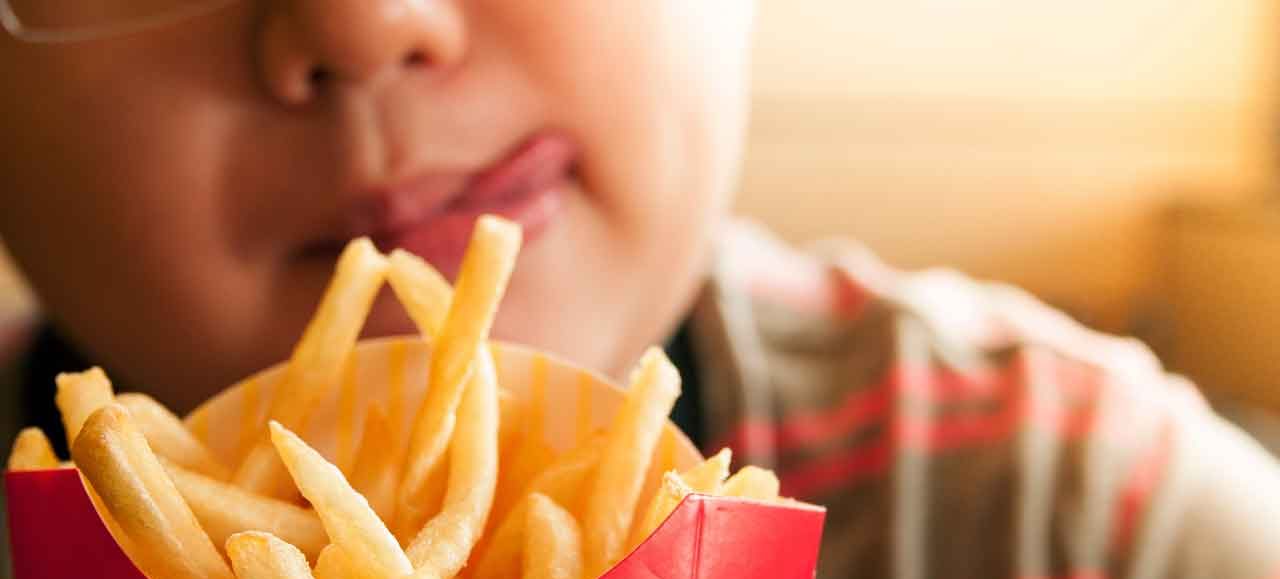How to Prevent Obesity in Children

For the most part, overweight and obese children and teens need help eating healthier foods and getting quality sleep and exercise — just like the rest of us.
Your child should be weighed at every doctor’s visit. When the number is too high, there’s plenty Mom or Dad can do to prevent childhood obesity.
Even though plump children are common, don’t ignore the problem. Some 17 percent of American children and teenagers between the ages of 2 and 19 can be classified as obese, according to reports from the Centers for Disease Control and Prevention (CDC), which means their weight has become a health risk. At 12 and up, the figure jumps to 20.5 percent. “It sneaks up on people,” says pediatrician Stephen Pont, medical director of the Texas Center for the Prevention and Treatment of Childhood Obesity in Austin, who struggled with his own weight as a child.
YOU MIGHT ALSO LIKE: How to Tell If Your Child Has a Concussion
Between doctors’ visits, you can check how your child fits the standards by age and height with this calculator. After the age of one, if a girl’s waist is more than 60 percent of her height, both measured in inches, she’s “at risk of having the metabolic complications of overweight,” says Frank Biro, MD, who studies and treats teenagers at Cincinnati’s Children’s Hospital Medical Center.
Effects of childhood obesity
Childhood obesity can lead to heart disease, diabetes, asthma, and sleep problems, and make kids vulnerable to bullying. Don’t fool yourself that your child will outgrow baby fat: 88 percent of obese fifth-graders were still too heavy in 10th grade, according to a study of almost 4,000 public school students.
You might wonder whether an overweight child has a genetic or hormonal problem that should be treated. A 2017 guideline from the Endocrine Society, which represents doctors who treat hormonal problems, offers clues:
- Children who are at around the right height for their age and have grown at a normal rate do not need tests for endocrine disorders simply because they are obese.
- You also don’t need to routinely test their fasting blood-sugar levels, as doctors do with heavy adults. In children, the test won’t be meaningful.
- However, children should be evaluated in other ways for diabetes if their body mass index (BMI) shows that they are heavier than 15 percent of all children in their age group.
- About 7 percent of all extremely obese children have a genetic problem. If your child became obese before the age of five and the family has a history of extreme obesity or shows unusual eating patterns, ask for a hormone test.
How to prevent obesity in children
For the most part, overweight and obese children need help eating more healthily and getting quality sleep and exercise — just like the rest of us.
Parents can make a big difference by changing some family habits. In a study of 8550 four-year olds, tykes who regularly ate dinner as a family, had limited screen-time, and got enough sleep were 40 percent less likely to be obese.
Limit time with gadgets. The American Academy of Pediatrics advises parents to establish screen-free zones in children's bedrooms and limit children and teens to one or two hours a day of TV or video games. Kids tend to snack when they’re sitting around glued to a screen.
Encourage exercise. The Endocrine Society recommends that children and teens get at least 20 minutes — an hour is ideal — of vigorous physical activity at least five days a week. The CDC recommends that they also engage in muscle and bone-strengthening activities like skipping rope, gymnastics, and push-ups at least three days a week. Encourage kids to walk or bike rather than drive them to school or after-school activities.
Make sure they get quality sleep. Restless or short nights can lead to weight gain.
Aim for at least five portions a day of fruits and vegetables. Keep fruits and veggies readily available, and keep forbidden snacks out of the house. Substitute water for soda and fruit juice, though you may need to cut back gradually.
Establish good eating habits as a family. Eating dinner together at the table is always a good idea. In restaurants, teach your children from an early age to order less, by setting a good example. Share appetizers, entrees and desserts rather than ordering one of each for each person — or skip the appetizer and dessert. Send away the bread basket.
Empower overweight pre-teens or teenagers. Shame doesn’t work, but self-awareness does. Your child might benefit from keeping a food or activity diary or using an electronic tracker. Encourage small, steady changes and discourage binge diets or drastic exercise.
YOU MIGHT ALSO LIKE: Coming to Your Child’s Emotional Rescue
Updated:
June 09, 2017
Reviewed By:
Janet O’Dell, RN